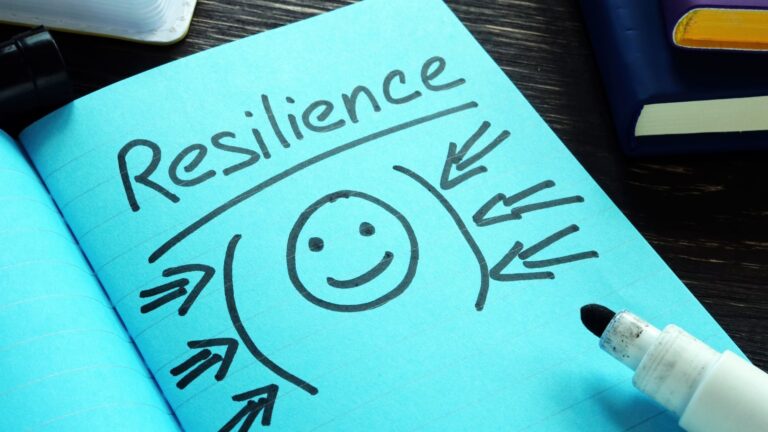Fortunately, research shows it is possible to promote resilience in children with autism spectrum disorder (ASD). By most definitions, resilience is the ability to adapt and cope with adversity and “bounce back.” Research shows individuals with autism can develop this trait through various interventions and support, including ABA therapy, also called applied behavior analysis. Moreover, cultivating resilience in children and teens with autism can significantly impact their ability to navigate life’s challenges and cope with whatever may arise more thoughtfully while learning about the world.
This blog post by ABA Centers of America will explore the importance of resilience for children and teenagers with autism while providing strategies for parents, caregivers, and professionals to promote its development. Fostering these characteristics in those on the spectrum can profoundly influence their personal growth and overall well-being, offering their families and those who love them more peace of mind today and in the future.
So, keep reading to learn more about autism and resilience so you can cultivate this skill more deeply in your loved one with ASD and yourself.
Click here for more information about ABA Centers of America and to read our other autism blogs.
Understanding Autism Spectrum Disorder
Before delving into resilience-building strategies, it’s essential to understand autism. ASD is a developmental condition often involving difficulties related to social interaction, communication struggles, and an inclination to engage in repetitive behaviors, according to Autism Speaks. The spectrum nature of autism means that no two individuals with ASD are the same, with each individual exhibiting distinct abilities and behaviors. However, there are often some shared features.
In some cases, individuals with autism may also struggle with sensory processing conditions, anxiety, and depression. These additional struggles can make it difficult for individuals with autism to cope with the adversity and stress they may face. Additionally, their distress or difficulties recovering from challenges related to ASD can also exacerbate tension within the family and loved ones trying to support them, making it critical to address.
The Role of Building Resilience
Resilience is important because it helps individuals recover from difficult life circumstances and demonstrate emotional flexibility around change. In the context of autism, resilience refers to the capacity of individuals to manage their condition’s complexities and lead fulfilling lives. By being resilient, individuals on the spectrum can better handle social nuances and environmental stimuli that can, at times, be intense or even painful.
Furthermore, resilience also enhances a person’s overall well-being by promoting a sense of self-confidence, independence, and control, even in the face of the struggle autism can present at times. Research by the Journal of Developmental Neurorehabilitation suggests that individuals with autism who demonstrate resilience experience better outcomes across many areas of life, including establishing emotional bonds, accomplishing academic achievements, or living as independently as possible.
Additionally, resiliency also supports children and teenagers with autism in developing a more encouraging self-image and sense of self-worth. By building resilience, neurodivergent children advance through life with more success and less fear.
Common Struggles Faced by Children and Teenagers with Autism
Children with autism may encounter a range of challenges that require resilience in many instances, including many of the following:
- Impairments in Social Communication: Some with ASD may experience hardships recognizing social behaviors in others, including reading social cues like facial expressions or maintaining conversations, which can limit their social encounters and relationship-building capacity, as described in autism research by the University of North Carolina. These social deficits in ASD can sometimes lead to isolation, feeling like one doesn’t belong, or even result in bullying, according to research related to social matters and autism.
- Sensory Sensitivities: As mentioned, many with autism struggle with hyperresponsiveness to sensory inputs like sound or touch, which can be overwhelming and sometimes lead to disruptive conduct that requires redirection.
- Executive Functioning Difficulties: Planning, organizing, and carrying out tasks can be more complicated for children with autism, making executing simple plans or completing academic undertakings more difficult without some structured support like ABA.
Strategies for Building Resilience Through ABA Therapy
ABA therapy utilizes techniques that can help children and teenagers with autism build resilience by teaching skills and strategies that reduce and redirect problematic behaviors and help individuals self-regulate so they can improve their experiences throughout life, every day. Overall, ABA aims to promote helpful behaviors while decreasing challenging ones through positive reinforcement schedules and various strategies that promote beneficial self-expression.
Over time, ABA therapy addresses a wide range of developmental features standard in autism, including building resiliency around challenges and working through hardships. ABA care helps individuals with autism develop skills such as communication, social interaction, and self-care, which are crucial for development and better coping.
Applied Behavior Analysis, or ABA therapy, offers science-backed techniques supporting children and teenagers with ASD in building resiliency in several of the following ways:
- Teaching conflict resolution and coping skills: ABA therapy breaks down complex challenges and explains ways to cope, like deep breathing, requesting a break, or describing feelings through suitable means.
- Establishing Predictability through Routine: By offering those on the spectrum structure in ABA environments or at home, they feel more secure and less stressed because they have expectations and clarity about the unknown.
- Developing Social Skills and Communication: Through social stories and role-playing, children receiving ABA care can learn how to interact in various social contexts.
- Sensory Techniques: The ABA framework can help children process and tolerate sensory information more effectively.
- Encouraging Self-Advocacy and Self-Esteem: Helping children recognize and express their needs boosts self-reliance and autonomy.
- Growing a Robust Support System: This may include family members, teachers, therapists, and other professionals who work closely with the child and understand neurodiversity. These folks can provide emotional support, ASD parenting guidance, and insight to help the child manage challenges and rebound more quickly.
- Creating a Safe and Inclusive Atmosphere for Children with ASD: An inclusive environment may involve educating others about the condition while promoting acceptance and implementing accommodations that support the child’s individual needs wherever they go.
Most of all, it’s crucial to remember that building resilience takes time and patience from everyone involved in the learning process. Every child with autism has a distinct and unique personality, and what works for one may not work for another. By tailoring ABA interventions and care based on individual strengths, individuals can overcome obstacles and thrive wherever they are.
Supporting Families and Caregivers of ASD Loved Ones in Building Resilience
Building resilience is a collaborative effort. Parents and caregivers of ASD loved ones may also need support. The following help many loved ones and caregivers of those on the spectrum also build resilience around difficult situations:
- Utilizing ASD Resources and Caregivers Support Networks: Connecting with other families and professionals experiencing autism both offline and online can provide a valuable exchange of ideas and experiences, helping families feel less alone.
- Promoting Self-Care and Stress Management: Caregivers should also prioritize their own needs to ensure they can be the best parents they can be, including taking personal time for interests, hobbies, and passions of their own.
Building Resilience in Autism Is Possible
Overall, building resilience in children with autism is possible and has a significant advantageous impact on their wellness and quality of life. Additionally, it helps them overcome whatever obstacles they may confront so they can participate in their communities more seamlessly and effectively.
Overall, resilience not only helps those with ASD navigate challenges and cope with stress but also further promotes their growth, developmental expansion, and emotional intelligence in tremendously beneficial ways.
By providing a solid support system, promoting positive self-esteem, and tailoring autism interventions like ABA to individual needs, we can now, regardless of neurodiversity, build resilience for a better future. So, let’s continue to support and empower those on the spectrum to reach their full potential and prosper as resilient individuals.
Resilience in Autism with ABA Center of America
At ABA Centers of America, we believe in a comprehensive approach to building resiliency in children and teenagers with autism through applied behavior analysis. Our team of dedicated ABA providers consists of BCBAs and RBTs serving the New Hampshire and Massachusetts region. We meet each client’s needs through custom ABA care that promotes lasting positive change on their level.
Contact us at ABA Centers of America via our online form or by calling 844-923-4222 to learn more about our approach to ABA and autism diagnostic services near you.
Remember that with the right tools and support, resilience in autism can flourish, leading to empowerment and a life filled with potential.







